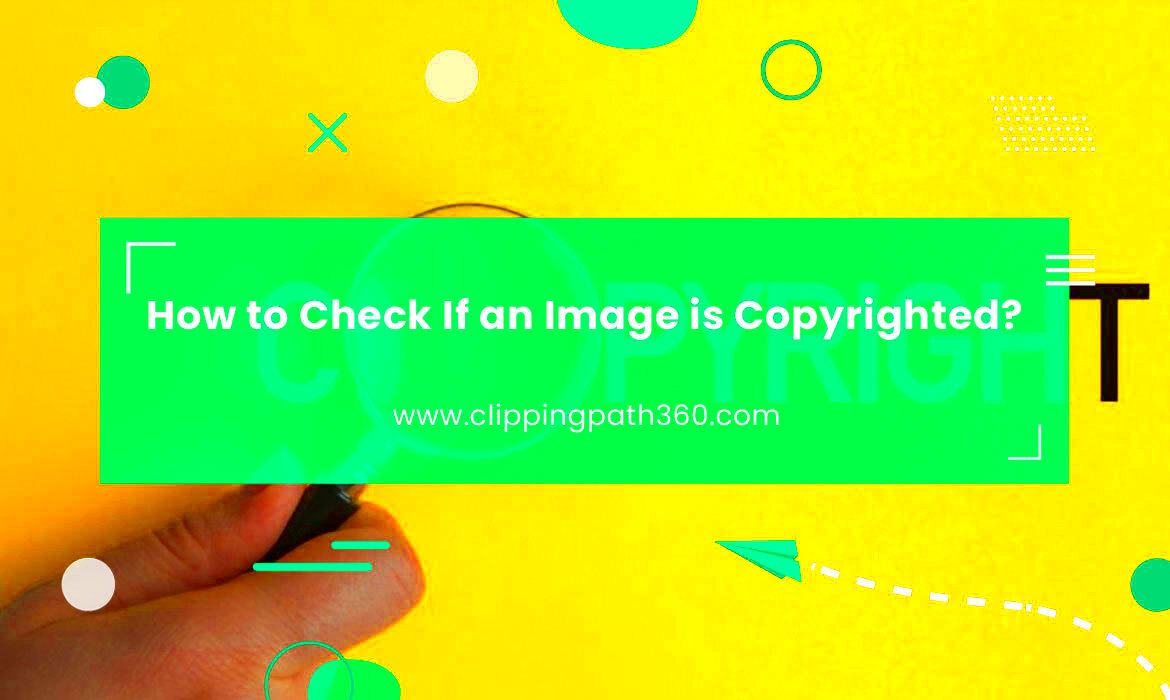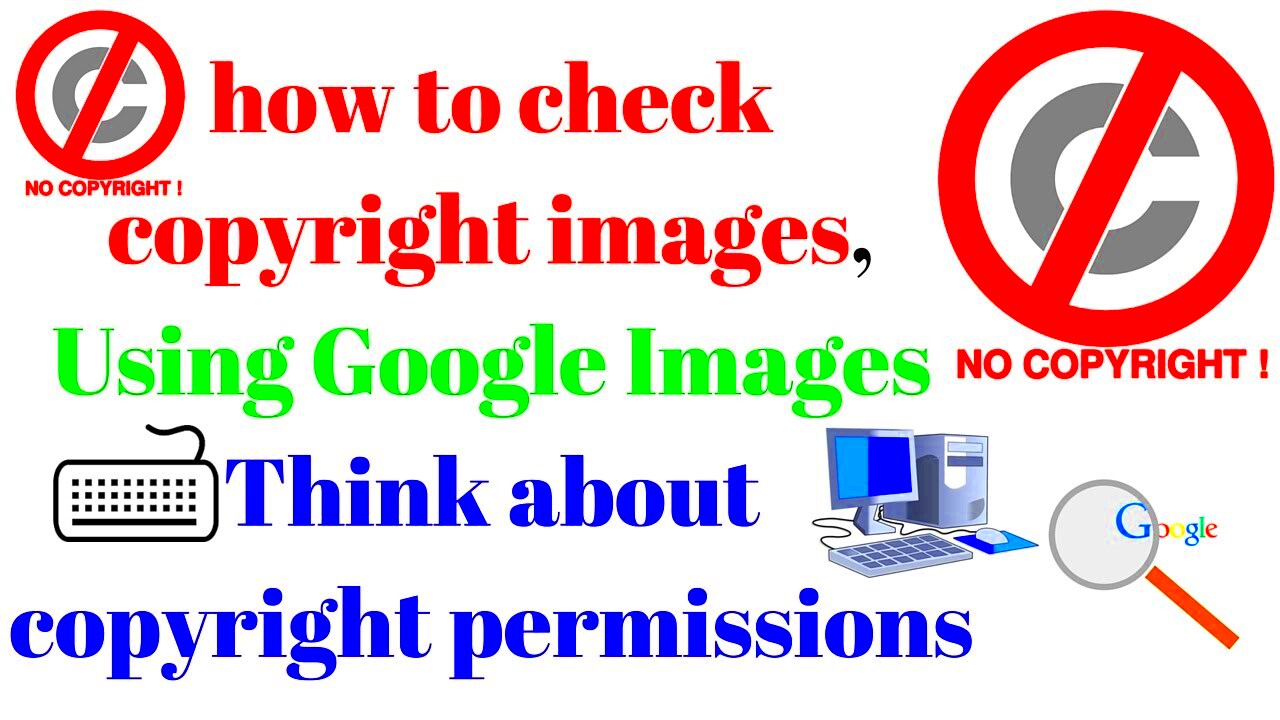Images you find online or in other media often come with copyright protections. Copyright laws protect the original creator's rights, giving them control over how their images are used. If you want to use an image, it's crucial to understand the copyright restrictions around it.
Copyright can apply to photos, illustrations, digital designs, and even specific patterns. Generally, using a copyrighted image without permission is illegal and can lead to legal issues.
Fortunately, there are different types of licenses, like Creative Commons and public domain, that allow for various levels of use, sometimes for free or with simple attribution.
Why Checking Image Copyrights Matters

Making sure an image is free or properly licensed is essential. Unauthorized use of copyrighted images can lead to penalties, from fines to having your website or content taken down. So, checking copyrights ensures you respect the creator's rights while avoiding potential legal trouble.
Copyrighted images aren't just about legal safety—they also impact your credibility and trustworthiness. Using licensed images or public domain content shows you're committed to ethical content creation.
Using the right images in the right way enhances the quality of your work and aligns with industry standards, whether you're creating a website, blog, or marketing materials.
Also Read This: How to Sell to Getty Images Without the App Alternative Submission Methods
How to Identify Copyrighted Images

Identifying if an image is copyrighted can be tricky, but there are several methods to help:
- Reverse Image Search: Tools like Google Images allow you to upload an image or paste its URL. This can help find where the image originates from and if it's available on stock image sites or copyright-protected platforms.
- Check Image Metadata: Some images come with metadata, or “EXIF” data, containing information about the creator and copyright details. Various apps and software allow you to view this information.
- Look for Watermarks: Watermarks usually indicate an image is copyrighted and needs licensing for use. If an image has a watermark, it’s almost certainly protected by copyright.
Additionally, many stock photo websites specify the license type, so checking the source is always wise.
Also Read This: Save Pinterest Video With This Effortless Method for Free
Tools for Checking Image Copyright Status
There are several tools available that make checking an image’s copyright status much easier. By using these resources, you can verify the image’s origin, determine whether it’s copyrighted, and even find details about licensing options. Here are some reliable tools for the task:
- Google Reverse Image Search: Google’s reverse image search allows you to upload an image or paste its URL. This tool helps trace the image back to its source, which can provide information on licensing requirements.
- TinEye: TinEye is a dedicated reverse image search engine that helps locate the image's source across the internet, sometimes even displaying copyright information.
- Pixsy: Pixsy specializes in protecting copyrighted images. You can upload your images, and it will notify you if they appear anywhere else online, making it a great choice for photographers or artists.
- Creative Commons Search: This tool allows you to search for images labeled with various Creative Commons licenses, helping you find images that are free to use with proper attribution.
These tools help simplify the process of identifying images that are safe to use and can prevent unintended copyright violations.
Also Read This: How to Make Money from Getty Images as a Contributor
What to Do if an Image is Copyrighted
If you discover that an image you want to use is copyrighted, there are several options to stay within legal boundaries:
- Request Permission: Reach out to the copyright holder and ask for permission to use the image. Many creators will grant usage rights, sometimes with a small fee or an attribution requirement.
- License the Image: Stock photo websites offer images for purchase or under specific licensing terms. Purchasing a license allows you to use the image legally.
- Look for Alternatives: If an image is copyrighted and permissions are hard to get, consider finding a similar image that’s available for free under a public domain or Creative Commons license.
- Modify the Content: In cases where the image is copyrighted but essential, creating an original image or illustration inspired by the copyrighted work can provide a safe alternative.
Following these steps ensures that you can use images responsibly without infringing on the creator's rights.
Also Read This: Mastering YouTube TV: Recording a Show in Progress Without Missing Key Moments
Best Practices for Safe Image Use
Using images safely is not only about legality; it also involves being respectful of creators and staying informed. Here are some best practices for safe image use:
- Use Credible Sources: Rely on reputable sources like licensed stock photo sites, public domain collections, or Creative Commons libraries for images.
- Check the Licensing Terms: Not all licenses are the same. Some images require attribution, while others are free to use in any context. Always read and follow the specific terms of use.
- Avoid Editing Without Permission: Even if an image is free to use, modifying it without the creator's permission may still be restricted. Be cautious about any edits, especially for commercial projects.
- Provide Attribution When Required: If an image license requires attribution, make sure to credit the creator in the manner specified. This can often be done in a caption or credits section.
- Stay Up-to-Date on Copyright Rules: Copyright laws can change, so it's important to stay informed about any updates, especially if you frequently use online images in your content.
By following these practices, you can protect yourself from copyright issues and support ethical content creation.
Also Read This: How to Retrieve Links from 123RF for Your Projects
Exploring Free and Licensed Image Sources
When sourcing images, it’s helpful to know where to find both free and licensed options. There are many platforms available, each offering different licensing terms. Here’s a look at some trusted resources for finding safe-to-use images:
| Source | Type of Images | License Requirements |
|---|---|---|
| Pexels | High-quality photos and videos | Free to use; no attribution required but appreciated |
| Unsplash | Creative, high-resolution photos | Free to use; attribution optional |
| Adobe Stock | Extensive licensed stock photos | Paid license required for use |
| Flickr (Creative Commons section) | User-contributed images with various licenses | Check specific license; many require attribution |
| Wikimedia Commons | Historical and public domain images | Varied licenses; most are free with attribution |
Using these sources ensures you have a variety of options for images, whether you’re looking for free resources or professional-grade licensed images. Each site provides different levels of quality, styles, and licensing requirements, so you can choose the one that best fits your project needs.
Also Read This: How to See Who Watched Your YouTube Videos Privacy and Analytics
Frequently Asked Questions about Image Copyrights
Here are answers to some common questions about image copyrights to help clarify how to use images safely:
- Can I use any image I find online for my project?
No. Many images are copyrighted, so using them without permission can lead to legal issues. It’s always best to check the copyright status before using any image. - What does “public domain” mean?
Public domain images are not copyrighted, meaning they’re free to use by anyone for any purpose. These are often older works or images released by their creators. - Is attribution always required?
Not always. Some free licenses don’t require attribution, but if it’s specified, be sure to give credit as instructed. - Can I edit an image with a Creative Commons license?
It depends on the specific type of Creative Commons license. Some allow modifications, while others may restrict changes. - What should I do if I find someone using my image without permission?
You may reach out to the user and request credit or ask them to remove the image. In some cases, legal action can be taken, especially if the image is being used commercially.
These FAQs offer basic guidance, but it’s a good idea to research specific licenses or consult a professional for complex copyright questions.
Final Thoughts on Using Images Safely
Using images responsibly is more than just avoiding legal trouble; it’s about respecting creators and supporting ethical practices online. By understanding copyright basics, using verified sources, and following best practices, you can confidently use images that align with copyright laws.
Whether you choose public domain, Creative Commons, or licensed images, the key is to stay informed and vigilant about each image’s terms. This approach not only keeps you legally safe but also builds trust with your audience by showing your commitment to ethical content standards.
In the end, taking the time to ensure your images are properly sourced and used goes a long way in creating quality content that respects the work of others.

 admin
admin








